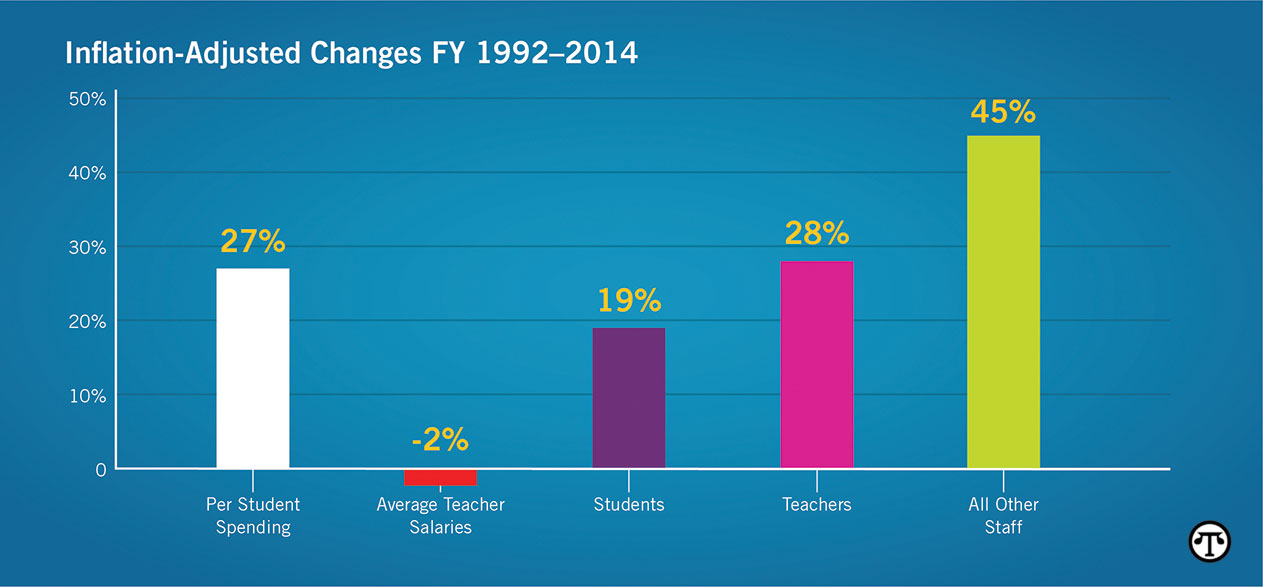
(NAPSI)—Most parents believe the more personnel there are in a school, the better the education their kids can get—but this may not be so.
Staffing Up
Consider this: Between 1950 and 2015, the number of full-time teachers increased nearly 2.5 times as quickly as the increase in students, reducing class sizes significantly. Over that same time, however, the number of nonteachers—administrators, social workers, counselors, reading and math coaches, janitors, bus drivers, cafeteria workers, curriculum specialists—increased more than seven times the increase in students.
Teachers’ Salaries Down
As public schools were hiring more and more nonteaching staff, inflation-adjusted salaries for public school teachers actually fell by 2 percent. Not only did teachers’ salaries stagnate, but they were also more vulnerable to cuts when school budgets were tightened. During the Great Recession, while this staffing surge was briefly and modestly reversed, school administrators were about 1.7 times more likely to fire teachers than they were to fire other administrators or nonteaching staff.
Costs Up
This explosion in “all other staff” hiring had a huge opportunity cost. A conservative estimate puts the potential savings at $35 billion a year, for a total of $805 billion. With that money, public schools could have given every teacher a permanent $11,100 raise or funded $8,000 per year education savings accounts (ESAs) for more than 4 million students.
Some say this staffing surge was necessary to improve the academic outcomes of an increasingly disadvantaged student population. Empirical studies, however, found that today’s public school students are slightly more advantaged than in previous generations. For example, families these days are smaller, child poverty is lower and parents tend to be more educated than in the past.
Student Achievement Flat
Yet public school students’ academic achievement and attainment have stagnated—even fallen—over the past several decades.
An Answer
That’s one reason many families embrace the idea of school choice. In schools, online, at home, with a tutor or through a combination of services, school choice gives caring adults the ability to meet every child’s educational needs, whatever the setting.
Learn More
For further facts and figures on how to create an education system that’s student centered and devotes more of its resources to its frontline talent, its teachers, go to www.edchoice.org.
- Dr. Scafidi is Professor of Economics and Director, Education Economics Center, Kennesaw State University.
